Web3 Social Media Platforms in 2025: Trends, Top Networks & What to Expect
Web3 Social Platform Comparison Tool
Explore the key features of leading Web3 social platforms in 2025. Click on any platform below to see detailed information.
Lens Protocol
LENS TokenSocial Graph Infrastructure
Farcaster
FAR TokenMicro-blogging
Bluesky
No Native TokenHybrid Feed Network
Audius
AUDIUS TokenMusic Streaming
Mirror
NFT PublishingTokenized Publishing
Mastodon
Open SourceFederated Microblogging
When you scroll past your feed on a traditional platform, you probably never think about who actually owns the data you just shared. Web3 social media platforms are a new breed of networks that put data ownership, privacy, and community governance back in the hands of users, using blockchain, tokenization, and decentralized protocols. In 2025 the market is exploding, with revenue projections soaring to nearly half a trillion dollars by 2034. This article breaks down why the sector is heating up, which networks are leading the pack, and what hurdles still stand between niche adoption and mainstream use.
TL;DR
- Web3 social media is projected to hit $471B by 2034, growing at ~52% CAGR.
- Top 2025 platforms: Lens Protocol (infrastructure), Farcaster (open‑graph), Bluesky, Audius (music), Mirror (publishing), Mastodon (federated), Steemit (content rewards).
- Key advantages: data ownership, token‑based monetization, interoperable identities, DAO governance.
- Main challenges: wallet onboarding, mobile UX, content discovery.
- Future win‑calls: seamless onboarding, mobile‑first apps, cross‑platform identity layers.
Market Landscape in 2025
The decentralized social sector moved from a hobbyist niche in 2023 to a serious investment class this year. Analysts estimate the total addressable market will expand from $7.2B in 2024 to $471B by 2034-an annual growth rate of 51.9%. Roughly 65 Web3 dApps are active across blockchains like Ethereum, Polygon, and Base, each vying for the same user attention that drives TikTok, Instagram, and X.
Two forces are driving that surge:
- Privacy fatigue. High‑profile data breaches and growing regulation (e.g., GDPR‑like laws in the Pacific) have made users wary of handing over personal information to centralized giants.
- Creator monetization pressure. Traditional platforms skim 70‑90% of ad revenue, leaving creators scrambling for sponsorships. Web3 token models let creators capture a larger slice of the pie.
Investors are betting on the idea that a network that can combine the reach of Web2 with the ownership model of Web3 will dominate the next decade.
Leading Platforms and Their Unique Hooks
Below are the most talked‑about networks in 2025, each representing a different slice of the decentralized social pie.
Lens Protocol - The Social Graph Engine
Lens Protocol is a blockchain‑native social graph built on Polygon that lets developers create composable, owner‑controlled profiles, posts, and follower relationships. It doesn’t host users directly; instead, it supplies the backbone that dozens of dApps use to store social data on‑chain. The protocol shines for developers looking to launch niche communities-think a music‑focused app or a gaming guild-without rebuilding the entire identity layer.
Farcaster - Open‑Protocol Micro‑Blogging
Farcaster leverages a decentralized, permissionless protocol that lets users own their posts, followers, and identity across any compatible client. By October 2023 it reached nearly 55K registered users; today the active community sits around 80K. Its biggest draw is the ability to switch between front‑ends (e.g., Cast.live, Warpcast) without losing history.
Bluesky - Moderated Yet Decentralized
Spawned from a Twitter‑incubated experiment, Bluesky uses the AT Protocol to enable decentralized yet moderated conversations, where each user controls their data but can still rely on algorithmic timelines curated by the platform. Its hybrid approach aims to please both privacy advocates and casual users who expect a familiar feed.
Audius - Music‑First Social Streaming
Audius is a decentralized music‑streaming service that lets artists upload tracks to a blockchain‑backed storage layer and earn directly from fans via token rewards. The platform now boasts over 7million active listeners and has become a go‑to for indie musicians seeking royalty‑free revenue streams.
Mirror - Tokenized Publishing
For writers, Mirror offers a Web3 publishing suite where articles can be minted as NFTs, crowdfunded through token sales, and stored on decentralized storage. It’s the bridge between traditional blogging and crypto‑native content ownership.
Mastodon - Federated Micro‑Blogging
Although not built on a public blockchain, Mastodon remains a key player in the decentralized social scene, using the ActivityPub protocol to connect independent servers (instances) into a federated network. Its open‑source roots make it a favorite for privacy‑first communities.
Steemit - Early Token Reward Model
One of the first to experiment with blockchain‑based content incentives, Steemit rewards creators with STEEM tokens for up‑votes and comments, storing posts on the Steem blockchain. While its growth has slowed, it still serves as a testbed for reward‑based governance.
Why Decentralized Social Beats Traditional Platforms
Four pillars separate Web3 socials from legacy giants:
- Data ownership. Users hold cryptographic keys that grant exclusive access to their posts, follower lists, and personal metadata.
- Tokenized incentives. Creators earn directly via NFTs, micro‑tips, or platform‑wide reward pools rather than relying on ad splits.
- Interoperable identity. A single wallet‑linked profile can move from Farcaster to Audius without re‑registering.
- DAO governance. Token holders vote on protocol upgrades, moderation policies, and treasury spend.
These benefits translate into tangible outcomes: higher creator retention, lower churn from privacy scares, and a healthier ecosystem where the platform’s success is directly tied to user value.
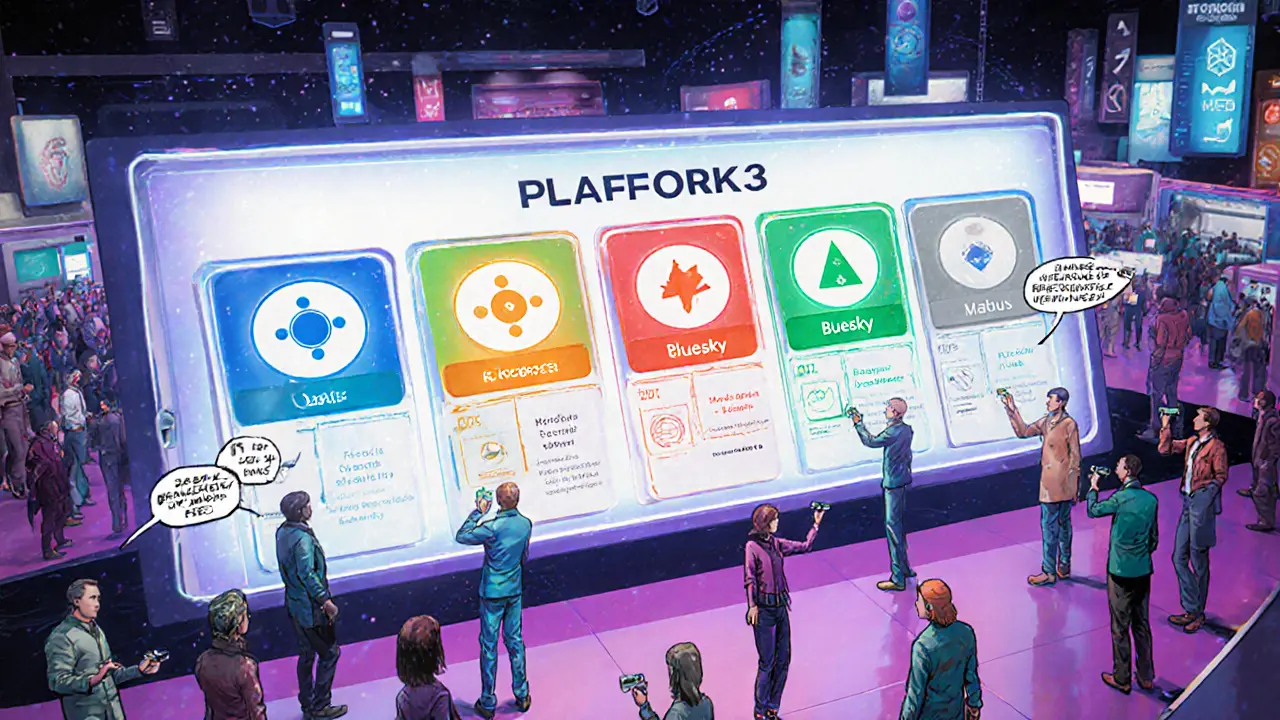
Adoption Hurdles Still in the Way
Despite the hype, mainstream users still stumble over three practical roadblocks:
- Wallet onboarding. Most platforms require a crypto wallet (e.g., MetaMask) before you can post. For a 25‑year‑old who just wants to share a photo, that extra step feels like a deal‑breaker.
- Mobile experience. The majority of Web3 socials are web‑only or have clunky mobile wrappers. In contrast, TikTok’s UI launches new videos in 0.2 seconds, setting a high bar.
- Content discovery. Without algorithmic recommendation engines owned by a single entity, users rely on manual curation, hashtags, or community forums, which can feel slow for casual browsers.
Addressing these pain points is the focus of the next wave of funding rounds.
Infrastructure Backbone: Storage, Networks, and Virtual Worlds
Behind every decentralized post lies a set of protocols that keep data alive.
- Filecoin provides over 2.5 exabytes of decentralized storage, allowing platforms to store images, videos, and metadata without a centralized CDN.
- Decentraland offers a blockchain‑backed virtual world where users can host immersive events, linking social interaction with 3‑D spaces.
- Layer‑2 solutions like Arbitrum, Optimism, and Base reduce transaction fees, making micro‑tips and NFT minting economical.
These building blocks are why a platform like Lens can store a follower graph on‑chain without breaking the bank.
Future Outlook: What Will 2026‑2028 Look Like?
Industry forecasts agree on three critical milestones for mass adoption:
- One‑click wallet creation. Projects such as Magic and Torus are already embedding social sign‑ups that generate a wallet behind the scenes, erasing the “install wallet first” barrier.
- Mobile‑first dApps. Native iOS/Android wrappers that cache blockchain state locally will bring load times down to sub‑second levels, rivaling Instagram’s snap speed.
- Cross‑chain identity layers. Standards like ERC‑752 and DID (Decentralized Identifier) will let a user prove ownership of a profile across Ethereum, Polygon, and Solana without separate logins.
If these trends hit, we could see daily active users on Web3 socials crossing the 200M mark by 2028, closing the gap with traditional platforms.
Quick Comparison Table
| Platform | Primary Use‑Case | Token Model | Governance | Mobile Support |
|---|---|---|---|---|
| Lens Protocol | Social Graph Infrastructure | LENS token for profile ownership & DAO voting | Full DAO | Web‑only (SDKs for mobile apps) |
| Farcaster | Micro‑blogging | FAR token for rev‑share & curation rewards | Community‑driven, partially DAO | Progressive Web App (PWA) mobile |
| Bluesky | Hybrid feed/social network | No native token (exploring) | Moderated with community oversight | iOS/Android native apps |
| Audius | Music streaming & creator rewards | AUDIUS token for staking & tipping | Hybrid DAO + core team | Native mobile apps (iOS/Android) |
| Mastodon | Federated micro‑blogging | No token (open source) | Instance admin governance | Third‑party mobile clients |
Next Steps for Different Personas
Creators looking to monetize fast: Try Mirror for publishing or Audius for music. Both let you mint NFTs and receive token tips within minutes of signing up.
Developers wanting to build a niche community: Integrate Lens Protocol’s SDK; you’ll get on‑chain profiles, follow graphs, and a ready‑made token economy.
Everyday users tired of data mining: Start with a PWA version of Farcaster, link a simple wallet like Magic, and test posting without giving away personal email addresses.
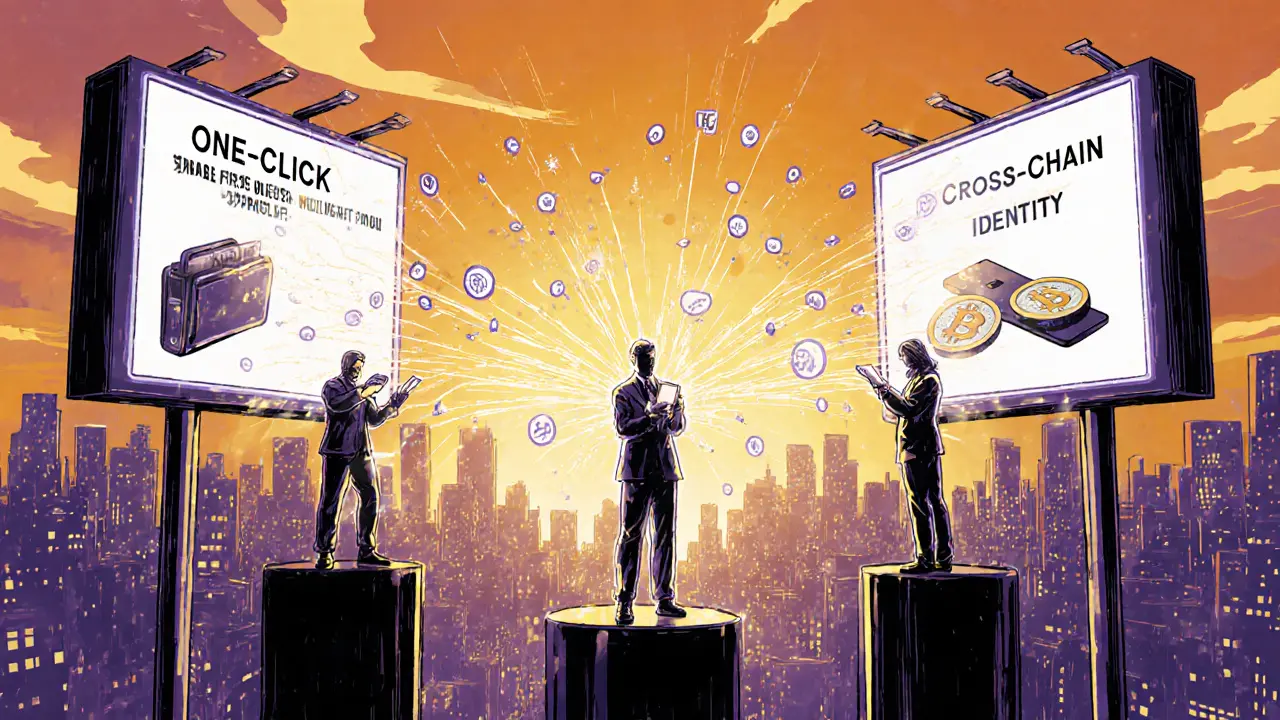
Frequently Asked Questions
Do I need to own cryptocurrency to use Web3 social platforms?
Most platforms require a wallet, but the wallet can be created for free and funded later. Some services (e.g., Magic, Torus) even let you start with a gas‑less “guest” account that upgrades when you decide to earn or spend tokens.
How is content moderation handled without a central authority?
Many platforms blend community voting with algorithmic filters. For example, Bluesky combines user‑driven moderation policies with a reputation system that down‑ranks spam without a single admin deciding every post.
Are my posts really private on these networks?
Privacy depends on the protocol. Platforms that store data on public blockchains are transparent but can be encrypted. Solutions like zero‑knowledge proofs (used by some Lens extensions) let you prove ownership without revealing the content to anyone else.
Will my followers from Web2 platforms automatically follow me on Web3?
Not yet. Cross‑platform import tools are emerging, but you usually need to invite your existing followers manually or through a bridge service that posts an invitation on your old account.
Is the token reward model sustainable?
Sustainability hinges on token economics. Platforms that lock a portion of rewards in a treasury (like Lens) can fund long‑term incentives, while others rely on continuous new user growth to keep token value up.
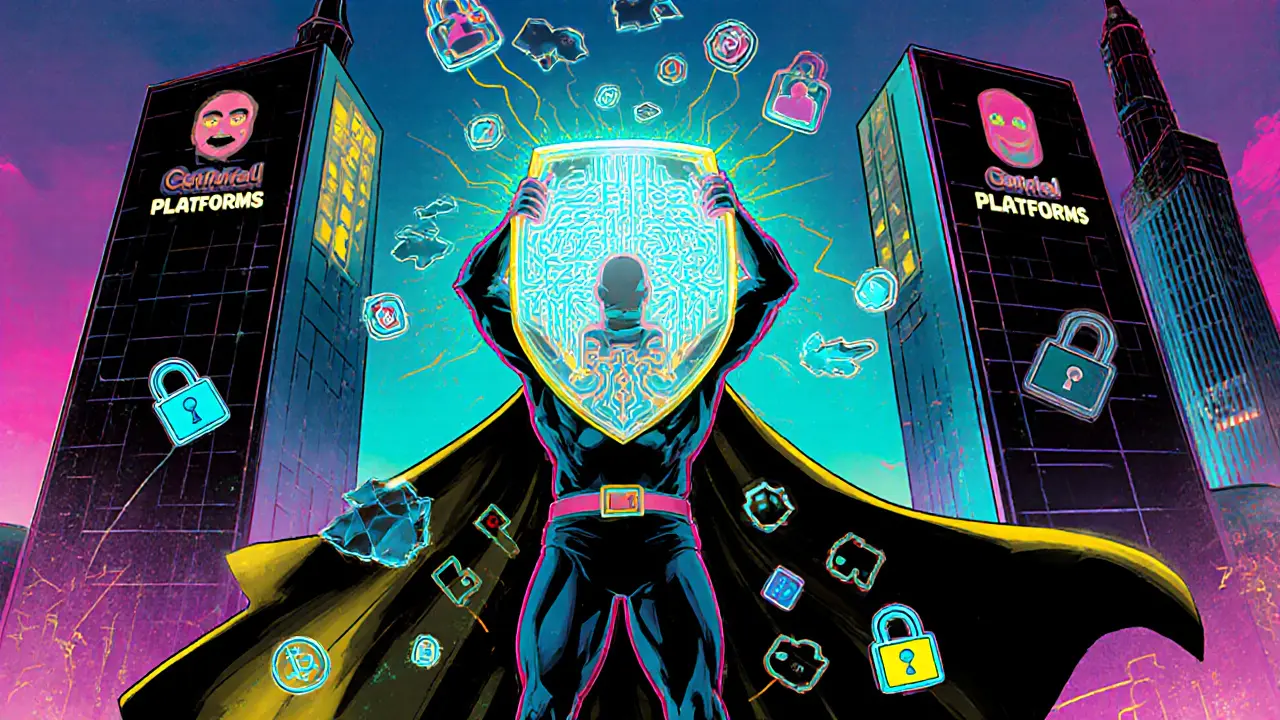



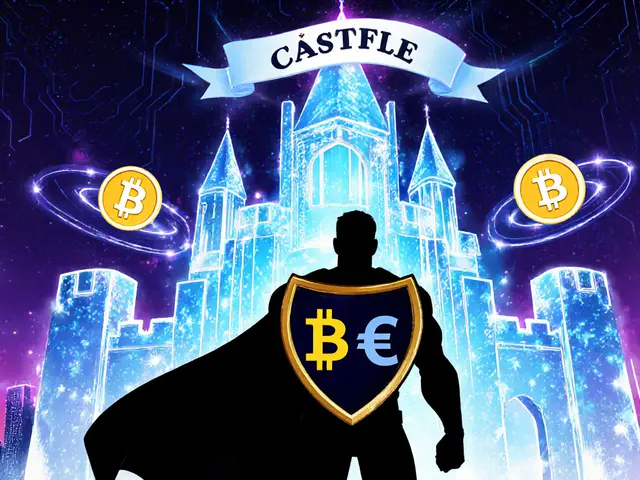
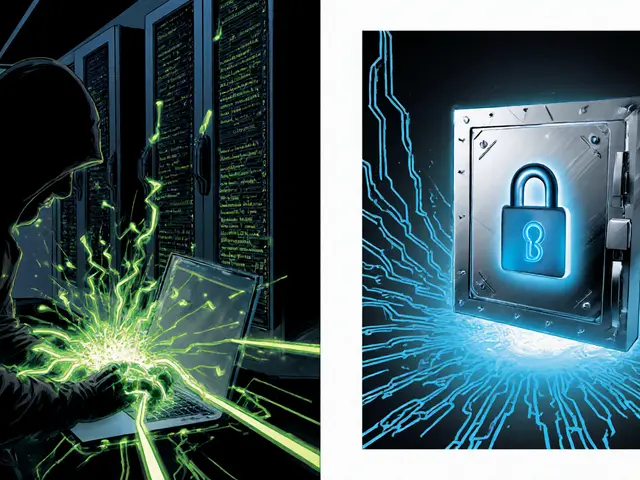
14 Comments
Sophie Sturdevant
August 16 2025Yo, the tokenomics on Lens are literally hyper‑scalable, leveraging Polygon’s L2 roll‑up architecture to slash gas fees while you mint your profile on‑chain. If you’re not stacking LENS now you’re basically missing the next wave of decentralized social graph arbitrage.
Jan B.
August 26 2025Web3 social platforms are still limited by wallet onboarding friction.
MARLIN RIVERA
September 4 2025Most of these so‑called “decentralized” networks are just hype‑driven Ponzi schemes masquerading as community‑first projects; the token rewards are unsustainable and the user experience is abysmal.
Debby Haime
September 14 2025Look, the future is bright for creators because these platforms finally hand you the reins-own your content, earn token rewards, and build genuine communities without the middleman draining your cash flow.
emmanuel omari
September 24 2025While you hype up LENS, remember that true digital sovereignty comes from sovereign‑state backed blockchain initiatives; only solutions that prioritize national crypto infrastructure can truly compete on a global scale.
Andy Cox
October 3 2025Honestly, I’m just watching how these dApps evolve; the tech is cool but I’m waiting for a smooth mobile app before I dive in.
Courtney Winq-Microblading
October 13 2025It’s a bummer that the wallet step feels like a gate, but think of it as a crypto passport-once you have it, the whole decentralized world opens up with endless creative possibilities.
katie littlewood
October 22 2025The landscape of Web3 social media in 2025 is a kaleidoscope of innovation, where tokenized ownership, decentralized identity, and community governance intersect to rewrite the rules of online interaction. First, the rise of protocols like Lens and Farcaster demonstrates that developers are no longer forced to build identity layers from scratch, because they can now plug into proven on‑chain graph infrastructure. This modularity accelerates time‑to‑market for niche communities, whether they’re focused on gaming, art, or scientific collaboration. Second, the token models embedded in these platforms create new economic incentives that align creators’ interests with the health of the network, turning fans into investors and amplifiers. For example, the LENS token not only grants voting power but also unlocks staking rewards for active participants. Third, the emergence of hybrid solutions like Bluesky shows that moderation and decentralization are not mutually exclusive; community‑driven oversight can coexist with algorithmic timelines that keep users engaged. These hybrid models are crucial for mainstream adoption because they lower the barrier for non‑technical users who still expect a smooth feed experience. Meanwhile, storage solutions such as Filecoin and Arweave ensure that multimedia content remains permanently accessible without relying on centralized CDNs. This permanence is a double‑edged sword, as it also raises important questions about content takedown and legal compliance, which the industry is only beginning to address. On the user side, wallet onboarding remains the biggest friction point, but projects like Magic and Torus are pioneering one‑click wallet creation that hides the complexity behind familiar social‑login flows. Mobile‑first initiatives are also gaining momentum, with native iOS and Android wrappers that rival the latency of TikTok and Instagram. Cross‑chain identity standards, such as ERC‑752 and DID, promise to let a single wallet act as a universal passport across Ethereum, Polygon, and Solana ecosystems. If these standards take hold, we could see a future where following a creator on Farcaster automatically subscribes you to their Audius music feed without any extra steps. Finally, the projected market growth to $471 billion by 2034 isn’t just a number; it reflects a shifting cultural tide toward data ownership and creator autonomy. In short, the next few years will be defined by how well these technical innovations translate into frictionless user experiences that can compete with the polished polish of Web2 giants.
Jenae Lawler
November 1 2025While your exuberant optimism paints a rosy picture, one must critically assess the underlying economic sustainability; token inflation, speculative participation, and regulatory uncertainty could well undermine the projected growth trajectories you so confidently cite.
Chad Fraser
November 10 2025Don’t let the tech hurdles scare you-every major platform started clunky, and the community is already building the tools that will make Web3 as easy as scrolling your feed.
Jayne McCann
November 20 2025The hype seems overblown; most people still use Facebook and Instagram, not some crypto app.
Mark Camden
November 30 2025It is ethically concerning that we glorify platforms which monetize personal data without consent; a shift toward user‑centric models is not merely a trend but a moral imperative.
Evie View
December 9 2025This is nonsense.
Sidharth Praveen
December 19 2025Seeing the momentum behind decentralized socials gives me hope that creators will finally have genuine ownership of their work, even if the road ahead requires patience and education.